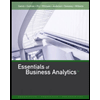QUESTION 1 Examine the information provided below and answer the following question. (10 MARKS) The hockey stick model of start-up financing, illustrated by the diagram below, has received a lot of attention in the entrepreneurial finance literature (Cumming & Johan, 2013; Kaplan & Strömberg, 2014; Gompers & Lerner, 2020). The model is often used to describe the typical funding and growth trajectory of many startups. The model emphasizes three main stages, each of which reflects a different phase of growth, risk, and funding expectations. Entrepreneur, 3 F's Debt(banks & microfinance) Research Business angels/Angel Venture funds/Venture capitalists Merger, Acquisition Grants investors PO Public market Growth (revenue) Break even point Pide 1st round Expansion 2nd round 3rd round Research commercial idea Pre-seed Initial concept Seed Early Expansion Financial stage Late IPO Inception and prototype Figure 1. The hockey stick model of start-up financing (Lasrado & Lugmayr, 2013) REQUIRED: Critically discuss the hockey stick model of start-up financing. In your response, explain the model and describe its three main stages, highlighting the key characteristics of each stage in terms of growth, risk, and funding expectations.
QUESTION 1 Examine the information provided below and answer the following question. (10 MARKS) The hockey stick model of start-up financing, illustrated by the diagram below, has received a lot of attention in the entrepreneurial finance literature (Cumming & Johan, 2013; Kaplan & Strömberg, 2014; Gompers & Lerner, 2020). The model is often used to describe the typical funding and growth trajectory of many startups. The model emphasizes three main stages, each of which reflects a different phase of growth, risk, and funding expectations. Entrepreneur, 3 F's Debt(banks & microfinance) Research Business angels/Angel Venture funds/Venture capitalists Merger, Acquisition Grants investors PO Public market Growth (revenue) Break even point Pide 1st round Expansion 2nd round 3rd round Research commercial idea Pre-seed Initial concept Seed Early Expansion Financial stage Late IPO Inception and prototype Figure 1. The hockey stick model of start-up financing (Lasrado & Lugmayr, 2013) REQUIRED: Critically discuss the hockey stick model of start-up financing. In your response, explain the model and describe its three main stages, highlighting the key characteristics of each stage in terms of growth, risk, and funding expectations.
Financial Reporting, Financial Statement Analysis and Valuation
8th Edition
ISBN:9781285190907
Author:James M. Wahlen, Stephen P. Baginski, Mark Bradshaw
Publisher:James M. Wahlen, Stephen P. Baginski, Mark Bradshaw
Chapter11: Risk-adjusted Expected Rates Of Return And The Dividends Valuation Approach
Section: Chapter Questions
Problem 1AIC
Related questions
Question

Transcribed Image Text:QUESTION 1
Examine the information provided below and answer the following question.
(10 MARKS)
The hockey stick model of start-up financing, illustrated by the diagram below, has received a lot of attention in the
entrepreneurial finance literature (Cumming & Johan, 2013; Kaplan & Strömberg, 2014; Gompers & Lerner, 2020). The model
is often used to describe the typical funding and growth trajectory of many startups. The model emphasizes three main
stages, each of which reflects a different phase of growth, risk, and funding expectations.
Entrepreneur, 3 F's
Debt(banks & microfinance)
Research Business angels/Angel Venture funds/Venture capitalists
Merger, Acquisition
Grants
investors
PO
Public market
Growth (revenue)
Break even
point
Pide
1st round
Expansion
2nd round
3rd round
Research
commercial idea
Pre-seed
Initial concept
Seed
Early
Expansion
Financial stage
Late
IPO
Inception and
prototype
Figure 1. The hockey stick model of start-up financing (Lasrado & Lugmayr, 2013)
REQUIRED:
Critically discuss the hockey stick model of start-up financing. In your response, explain the model and describe its three
main stages, highlighting the key characteristics of each stage in terms of growth, risk, and funding expectations.
AI-Generated Solution
Unlock instant AI solutions
Tap the button
to generate a solution
Recommended textbooks for you

Financial Reporting, Financial Statement Analysis…
Finance
ISBN:
9781285190907
Author:
James M. Wahlen, Stephen P. Baginski, Mark Bradshaw
Publisher:
Cengage Learning


Principles of Accounting Volume 1
Accounting
ISBN:
9781947172685
Author:
OpenStax
Publisher:
OpenStax College

Financial Reporting, Financial Statement Analysis…
Finance
ISBN:
9781285190907
Author:
James M. Wahlen, Stephen P. Baginski, Mark Bradshaw
Publisher:
Cengage Learning


Principles of Accounting Volume 1
Accounting
ISBN:
9781947172685
Author:
OpenStax
Publisher:
OpenStax College

EBK CONTEMPORARY FINANCIAL MANAGEMENT
Finance
ISBN:
9781337514835
Author:
MOYER
Publisher:
CENGAGE LEARNING - CONSIGNMENT

Essentials of Business Analytics (MindTap Course …
Statistics
ISBN:
9781305627734
Author:
Jeffrey D. Camm, James J. Cochran, Michael J. Fry, Jeffrey W. Ohlmann, David R. Anderson
Publisher:
Cengage Learning
